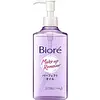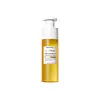What's inside
What's inside
 Key Ingredients
Key Ingredients

 Benefits
Benefits

No benefits
 Concerns
Concerns

 Ingredients Side-by-side
Ingredients Side-by-side

Paraffinum Liquidum
EmollientPEG-12
HumectantLauric Acid
CleansingIsododecane
EmollientIsopropyl Palmitate
EmollientWater
Skin ConditioningPolyglyceryl-2 Isostearate
EmulsifyingDecyl Glucoside
CleansingPolysorbate 85
EmulsifyingGlyceryl Oleate
EmollientIsostearic Acid
CleansingIsostearyl Glyceryl Ether
Skin ConditioningMyristyl Alcohol
EmollientIsostearyl Glyceryl Pentaerythrityl Ether
EmollientAlcohol Denat.
AntimicrobialCitric Acid
BufferingBHT
AntioxidantParfum
MaskingParaffinum Liquidum, PEG-12, Lauric Acid, Isododecane, Isopropyl Palmitate, Water, Polyglyceryl-2 Isostearate, Decyl Glucoside, Polysorbate 85, Glyceryl Oleate, Isostearic Acid, Isostearyl Glyceryl Ether, Myristyl Alcohol, Isostearyl Glyceryl Pentaerythrityl Ether, Alcohol Denat., Citric Acid, BHT, Parfum
Ethylhexyl Palmitate
EmollientC12-20 Isoparaffin
EmollientParaffinum Liquidum
EmollientPEG-20 Glyceryl Triisostearate
EmollientIsopropyl Myristate
EmollientEthylhexyl Stearate
EmollientWater
Skin ConditioningButylene Glycol
HumectantSorbeth-30 Tetraoleate
EmulsifyingCetyl Ethylhexanoate
EmollientSimmondsia Chinensis Seed Oil
EmollientCamellia Japonica Seed Oil
EmollientCentella Asiatica Extract
CleansingAsiaticoside
AntioxidantMadecassic Acid
Skin ConditioningAsiatic Acid
Skin ConditioningRosmarinus Officinalis Leaf Extract
AntimicrobialChamomilla Recutita Flower Extract
MaskingPolygonum Cuspidatum Root Extract
AntioxidantScutellaria Baicalensis Root Extract
AstringentCamellia Sinensis Leaf Extract
AntimicrobialGlycyrrhiza Glabra Root Extract
BleachingCeramide NP
Skin ConditioningCeramide As
Skin ConditioningCeramide Ns
Skin ConditioningCeramide Ng
Skin ConditioningCeramide AP
Skin ConditioningCeramide EOP
Skin ConditioningCaprylic/Capric Triglyceride
MaskingHydrogenated Lecithin
EmulsifyingParfum
MaskingGlycerin
HumectantPhenoxyethanol
PreservativeCaprylyl Glycol
EmollientEthylhexylglycerin
Skin ConditioningEthylhexyl Palmitate, C12-20 Isoparaffin, Paraffinum Liquidum, PEG-20 Glyceryl Triisostearate, Isopropyl Myristate, Ethylhexyl Stearate, Water, Butylene Glycol, Sorbeth-30 Tetraoleate, Cetyl Ethylhexanoate, Simmondsia Chinensis Seed Oil, Camellia Japonica Seed Oil, Centella Asiatica Extract, Asiaticoside, Madecassic Acid, Asiatic Acid, Rosmarinus Officinalis Leaf Extract, Chamomilla Recutita Flower Extract, Polygonum Cuspidatum Root Extract, Scutellaria Baicalensis Root Extract, Camellia Sinensis Leaf Extract, Glycyrrhiza Glabra Root Extract, Ceramide NP, Ceramide As, Ceramide Ns, Ceramide Ng, Ceramide AP, Ceramide EOP, Caprylic/Capric Triglyceride, Hydrogenated Lecithin, Parfum, Glycerin, Phenoxyethanol, Caprylyl Glycol, Ethylhexylglycerin
 Reviews
Reviews

Alternatives
Ingredients Explained
These ingredients are found in both products.
Ingredients higher up in an ingredient list are typically present in a larger amount.
Paraffinum Liquidum is also known as liquid paraffin. It is a type of highly refined mineral oil.
Like other oils, Paraffinum Liquidum has emollient properties. Emollients help soothe and soften the skin. By creating a barrier to trap moisture within, emollients help keep your skin hydrated.
Paraffinum Liquidum does not irritate the skin and is non-comedogenic.
Learn more about Paraffinum LiquidumParfum is a catch-all term for an ingredient or more that is used to give a scent to products.
Also called "fragrance", this ingredient can be a blend of hundreds of chemicals or plant oils. This means every product with "fragrance" or "parfum" in the ingredients list is a different mixture.
For instance, Habanolide is a proprietary trade name for a specific aroma chemical. When used as a fragrance ingredient in cosmetics, most aroma chemicals fall under the broad labeling category of “FRAGRANCE” or “PARFUM” according to EU and US regulations.
The term 'parfum' or 'fragrance' is not regulated in many countries. In many cases, it is up to the brand to define this term.
For instance, many brands choose to label themselves as "fragrance-free" because they are not using synthetic fragrances. However, their products may still contain ingredients such as essential oils that are considered a fragrance by INCI standards.
One example is Calendula flower extract. Calendula is an essential oil that still imparts a scent or 'fragrance'.
Depending on the blend, the ingredients in the mixture can cause allergies and sensitivities on the skin. Some ingredients that are known EU allergens include linalool and citronellol.
Parfum can also be used to mask or cover an unpleasant scent.
The bottom line is: not all fragrances/parfum/ingredients are created equally. If you are worried about fragrances, we recommend taking a closer look at an ingredient. And of course, we always recommend speaking with a professional.
Learn more about ParfumWater. It's the most common cosmetic ingredient of all. You'll usually see it at the top of ingredient lists, meaning that it makes up the largest part of the product.
So why is it so popular? Water most often acts as a solvent - this means that it helps dissolve other ingredients into the formulation.
You'll also recognize water as that liquid we all need to stay alive. If you see this, drink a glass of water. Stay hydrated!
Learn more about Water